Of all current Australian members of the ISSTD, when I last checked, it seemed that I had been a continuous Society member for longer than anyone else bar one, which does tend to position one as an active participant in the field in this country, before there really was one. Whilst there had been the occasional case report or anecdotal reference to Multiple Personality Disorder in the Australian medical literature, there had been no systematic research here into dissociative disorders until the early nineties. In June 1953, David Maddison reported in the Medical journal of Australia what may be the first detailed case report of Multiple Personality Disorder in the Australian literature. In keeping with the then prevailing psychiatric views, features of the case were described as “unique” or “rare”. The reported developmental history given is scant, but the reader is told the patient had an “unhappy” childhood in a household where the father participated in “recurrent alcoholic excesses” resulting in frequent quarrels and where the mother dabbled in “spiritualism, occult philosophy and fortune telling”. An older sister was reported to be “severely maladjusted”. In 1980 as a first year trainee in psychiatry I attended the last teaching session David Maddison (then Dean of Medicine at the University of Newcastle) ever gave before his untimely death. A potted history might serve as a reference point for reflections: In 1992 the newly established Australian Association for Multiple Personality and Dissociation (AAMPD), which was subsequently renamed the Australian Association of Trauma and Dissociation (AATD), held the first of six consecutive annual conferences, the first being in Melbourne and the final one in Brisbane in September 1997, at which point the AATD merged with the Australasian Society for Traumatic Stress Studies (ASTSS). Plenary speakers at these conferences that Susan Henry, Naomi Halpern and colleagues organized, included Sandy McFarlane, Bessel van der Kolk, John Briere, Colin Ross, Derek Silove and Warwick Middleton. In 1993 the Australian False Memory Society (AFMS) was founded with its most prominent early spokesman being psychiatrist Dr Jerome Gelb who in subsequent years encountered major professional sanctions in respect to plagiarism, firearms offences and a sexual relationship with a patient. A national well-attended, sell-out mainstream conference, “Trauma, Memory and The Self”, was presented by Australian and New Zealand Association of Psychotherapy and the Department of Child, Adolescent and Family Psychiatry, at Westmead Hospital, Sydney, in November, 1994. The international plenary speaker was Bessel van der Kolk. In 1996 Richard Guilliatt, a journalist, published “Speaking of the Devil”, a book taking a sensationalist approach to the claimed ravages of “recovered memory therapy”. His thesis didn’t seem to resonate in Australia and within a few weeks his book was being offered cheaply in bookshop remainder bins. In January 1997 what is now known as the Trauma and Dissociation Unit (TDU), Belmont Hospital opened with six beds. In time a day-program was developed. Subsequently inpatient bed numbers increased to nine and then to twelve. TDU this year celebrated its 20th anniversary of continuous operation, with this author remaining in the position of Director up to the present. Throughout, TDU has been heavily involved in supporting research into dissociative disorders and related subjects, as well as taking an active role in supporting professional educational endeavors. It is very much oriented to being a mainstream specialist mental health unit and it takes referrals from all over Australia. In 1998 the Australian and New Zealand Journal of Psychiatry published the first case series of Australian patients with DID to appear in the scientific literature. This study by Middleton and Butler examined closely the abuse histories and clinical phenomenology associated with 62 individuals with DID (with data collected over the years 1992-1997). On all major parameters they conformed closely with descriptions reported in US and Canadian studies. The published case series provided a local benchmark for what DID looked like in Australia and established that it was far from uncommon, while a hospital program was an attempt to offer a congruent accessible treatment model. The study included preliminary findings on the prevalence of a phenomena that was later to become, for the first time, the subject of systematic research, by this author – ongoing incestuous abuse during adulthood. Martin Dorahy was in 2001 awarded the first PhD in Australia based on research subjects with a diagnosis of DID. His thesis was titled, “Cognitive inhibitory functioning in dissociative identity disorder” and data collection was carried out while he was employed as a psychologist in TDU. Subsequent to their involvement with the AATD, Susan Henry and Naomi Halpern established The Delphi Centre which for two decades has offered a continuing set of conference and seminar offerings presented by international and nationally based presenters that have done much orientate Australian mental health professionals to trauma, dissociation and dissociative disorders. Nearly all such Delphi Centre offerings have had the Cannan Institute and/or Belmont Hospital as a supporter and/or co-convenor, and from time to time the Cannan Institute has taken a lead role in organizing such conferences. International presenters at seminar series offered by The Delphi Centre have included Jennifer Freyd, Colin Ross, John Briere, Elert Nijenhuis, Christine Courtois, Janina Fisher, Julian Ford, Bethany Brand, John Arden and Susan Hart. Nationally-based presenters have included Warwick Middleton and Naomi Halpern. Some sense of the penetration of trauma and dissociation into the Australian mental health field is reflected in many of the total attendances in seminar series that have been offered. The ASTSS was involved in organizing and hosting the 2000 World Congress in Melbourne on behalf of the International Society for Traumatic Stress Studies (ISTSS), which was attended by over 1000 delegates. There was a significant focus on dissociation. The Delphi Centre in collaboration with The Cannan Institute, and The Trauma and Dissociation Unit, Belmont Hospital et. al. at the Grand Hyatt, Melbourne 12th-14th September 2003, presented “Transforming Trauma: Critical, Controversial and Core Issues”, a conference that drew 625 attendees and which featured plenary speakers from USA, Canada, Australia, Asia and Europe. Janina Fisher’s three-city seminar tour in 2010 drew a collective attendance of 1,300. John Briere’s 2011 four-city tour attracted 1,600 attendees. [In June 2015, this author was part of a Mental Health Professionals network (MHPN) webinar, “Supporting the Wellbeing of People Experiencing a Trauma Response”, which attracted 3,500+ registrants, a record number for any MHPN webinar.] An attempt to disrupt the conference program at the Grand Hyatt in 2003 by a few members of the AFMS was very short-lived. Subsequently a few AFMS activists managed to lobby the Victorian health minister of the time into launching an inquiry examining the extent that “recovered memory therapy” was practiced in the state of Victoria. The inquiry, which engendered no support from the mental health community reported in 2005, finding that the term was not used by health professionals but was being used by lobby groups for political purposes. For all intents and purposes the AFMS has long been a defunct organization and its very bargain basement website has not been updated since the year 2000. Following the lead of The Delphi Centre, a number of other organizations [including the Australasian Society for Traumatic Stress Studies, the Australian Child Foundation, the Centre for Mental Health Education, the Byron Centre, the Australian College of Psychological Medicine, and the Australian and New Zealand College of Psychiatrists (RANZCP) Section of Psychotherapy] have convened seminar series or conferences featuring national/international speakers from the trauma and dissociation field. The Cannan Institute, established in 1998 has provided assistance to a number of organizations associated with the trauma and dissociation field. In 2000 in conjunction with TDU it offered a seminar at Belmont Hospital featuring Onno van der Hart. In February 2002 it hosted a conference featuring Jennifer Freyd, “Blind to Betrayal: Forgetting, Unawareness and Interpersonal Trauma”. In April 2002 it organized and hosted a national conference on “Boundaries” featuring Glen Gabbard. The Institute gave a grant to support the work of Nick Bryant (author of “The Franklin Scandal”), as well as supporting a number of other local research projects. It assisted with the organization of the landmark conference, which brought together survivors, therapists and members of the clergy, ““Child Abuse & Religious Organizations: The Sacred and Profane: An Interdisciplinary Seminar”, convened by Carolyn and Philip Quadrio et al. and held at the University of NSW in June 2008. The Institute was the first declared major supporter of the recently launched ISSTD E-Journal, “Frontiers in the Psychotherapy of Trauma & Dissociation”. The Institute sponsored the recent publication of the JTD Special Issue on “The Abused and the Abuser: Victim – Perpetrator Dynamics, and it was a major sponsor of the ISSTD Regional Conference in Sydney in November 2015. The Institute took a primary role in organizing the successful 2017 regional TDU/Cannan/ISSTD Conference in Brisbane in March 2017, which was structured as a fund-raising initiative for the ISSTD. As a consequence of the enormous goodwill and generosity of colleagues, over $15,000(US) arising as profits from the Brisbane conference was transferred to the ISSTD. The Cannan Institute will be a major sponsor of the ISSTD bi-national regional conference scheduled for Christchurch in November 2019. Trauma and dissociation featured prominently in the program of the World Congress for Psychotherapy, “World Dreaming”, Sydney Convention and Exhibition Centre, Darling Harbour, 24th–28th August 2011, with featured presentations by Colin Ross, Russell Meares, Martin Dorahy, David Leonard and this author. The Cannan Institute was a sponsor and supporter of “World Dreaming”. On 11th November 2012, following years of lobbying by individuals and organizations and some excellent investigative journalism and principled stands by key individuals, it was announced by Prime Minister Julia Gillard that Australia was appointing a national Royal Commission to investigate the institutional aspects of child sexual abuse. The Royal Commission chaired by Hon. Justice Peter McClellan AM, QC will sit one final time on December 14, 2017 to publicly mark the conclusion of the ground-breaking five-year long inquiry. Since the inquiry got underway in 2013 there have been 57 public hearings, involving 444 days of sitting time and where evidence was heard from more than 1,300 witnesses. Commissioners have also listened to the personal accounts of almost 8,000 survivors of child sexual abuse in institutions through “private sessions”. The scope and competence of the Royal Commission has been unique in human history, and what it has comprehensively laid bare is of immense relevance to all societies. It is perhaps not by chance that very close to the time that Cardinal George Pell, (who potentially would be the highest ranking Catholic priest to ever stand trial in a civil court in 2,000 years), was to appear in a Melbourne court on 6th October 2017 to set a date for his committal hearing, that the Murdoch-owned newspaper, The Australian, via Richard Guilliatt and others, launched a series of newspaper articles, very dated in their content, raising again the specter of “recovered memory therapy” and using this to attempt to attack the Royal Commission. They failed to incite much public anguish. On a positive note this rather unscientific spread of articles was somewhat countered by other articles written by qualified mental health experts, appearing in a range of publications, including in The Australian. There has been a growing awareness about complex trauma in Australia and many organizations seek to become more trauma-informed. The Blue Knot Foundation has done much work educating health, legal and educational services around Australia in trauma-informed practice. Despite these positive changes there is still a widespread lack of knowledge about dissociative disorders, as is the case elsewhere in the world and undoubtedly many Australians with a dissociative disorder remain undiagnosed and untreated. Practitioners in the field can feel professionally somewhat isolated, while the TDU remains Australia’s only specialist trauma and dissociation inpatient unit. However, we continue to move forward, with the support of international colleagues through organizations like ISSTD and through internet communities such as DISSOC. The ISSTD took the opportunity, early in the life of the Australian Royal Commission, to formally write to the Commission supporting the work it was undertaking and offering to assist in any way it could. Justice Peter McClellan was a featured plenary speaker at our three-day ISSTD bi-national regional conference in Sydney in November 2015, his address receiving a standing ovation. Our ISSTD Sydney conference which attracted 386 attendees, also had as featured plenary speakers Richard Kluft, Bethany Brand and Joyanna Silberg, as well as the then ISSTD Immediate Past President, the President, and the President-Elect. The Sydney conference also featured presentations by the EMDR Association of Australia. In the wake of the Sydney bi-national conference resident Australian ISSTD membership peaked at around 174 members and that of New Zealand-based members, at 22. Australia is the birthplace or home to a vibrant community of academic and clinically oriented colleagues who continue to make major contributions to our Society and to the field of trauma and dissociation in general. In fact they are heavily embedded in the Society. At least six Australians are Fellows of the ISSTD, three currently serve on its Board, and most committees have one or more Australians actively involved. For example, one of these, Michael Salter, is exemplary Society member who plays a very active role on the Executive of the RAMCOA SIG, is a member of the Scientific Committee and continues to write and publish books on organized abuse. He is a candidate for election to the 2018 ISSTD Board. He was a presenter in the recent highly successful whole day webinar offered by our RAMCOA SIG. Our ISSTD Newsletter is edited by another very energetic Australian – Kate McMaugh. Board member Joan Haliburn recently published the text, “An Integrated Approach to Short-Term Dynamic Interpersonal Psychotherapy: A Clinician’s Guide” (Karnac, 2017). This part of the world is honored by the fact that for the past two years, you have placed the fortunes of your Society in the hands of Boards chaired by two successive Australian ISSTD Presidents. There are many achievers: Dr Cathy Kezelman for the last 15 years has headed the Blue Knot Foundation (formerly known as Australians Surviving Child Abuse), Australia’s largest and most successful organization representing the survivors of child abuse. Professors Martin Dorahy and David Gleaves have senior academic appointments and continue to contribute landmark publications to the field. (Martin, among other notable achievements, has been a recipient of no less than four ISSTD Pierre Janet Writing Awards since 2008.) It is noteworthy that a third of the papers contributed to the recent special double issue of the Journal of Trauma and Dissociation, “The Abused and the Abuser: Victim – Perpetrator Dynamics” were authored by Australians. I recall that on 22nd September 1996, one day short of his 25th birthday, I met a young countryman and former electrician who clearly demonstrated enormous aptitude. I am very proud that Martin, with whom I have worked and collaborated with for over two decades, is our 2017 ISSTD President. He and our many very valued colleagues from “down under” never fail to deliver, to energize and to maintain a sense of humor. Come and join us at the 2019 bi-national (New Zealand-Australian) regional conference in Christchurch in November 2019. It will be set in a spectacular part of the world. Rather fittingly, we are planning a program that will cover the changing landscape of our field, incorporating themes of treatment innovations as well as trauma and memory.

Melbourne conference “Transforming Trauma”, 2003: Many familiar faces including Colin Ross, John Briere, Russel Meares, Warwick Middleton, Susan Henry, Naomi Halpern and more!

Warwick Middleton Martin Dorahy and Colin Ross, World Congress of Psychotherapy, Darling Harbour, Sydney 26th August 2011

Susan Henry, John Briere and Naomi Halpern, 25th May 2008
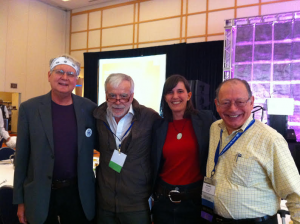
Frank Putnam, Warwick Middleton, Winja Lutz & Rick Kluft, ISSTD Annual Conference, Baltimore 18th Nov 2013

Rick Kluft plenary presenter, ISSTD Sydney, 28th November
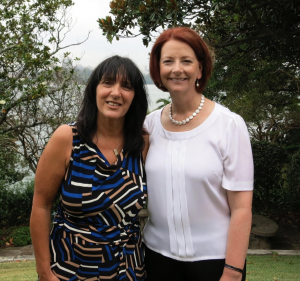
ISSTD Member, President Blue Knot Foundation, Dr Cathy Kezelman with the then Australian Prime Minister Julia Gillard,

Martin Dorahy, Cathy Kezelman John Feneley, Joan Haliburn & Phil Kinsler,
Sydney ISSTD Regional Conference, November 2015
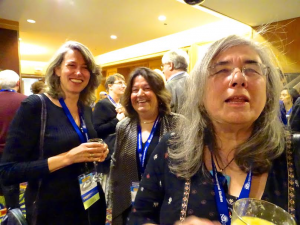
Naomi Halpern, Eileen Averi and Valerie Sinason, President’s reception 1st April 2017
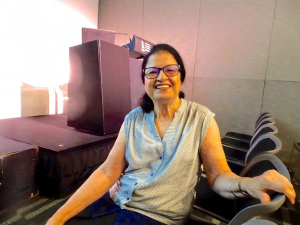
Dr Joan Haliburn, ISSTD Board Member and featured workshop presenter, TDU/Cannan/ISSTD Conference Brisbane, 19th March 2017
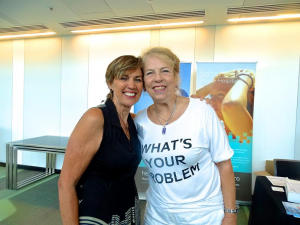
Dr Jan Ewing, workshop presenter, Rozz Nutting – long-term ISSTD members, TDU/Cannan/ISSTD Conference Brisbane, 19th March 2017

